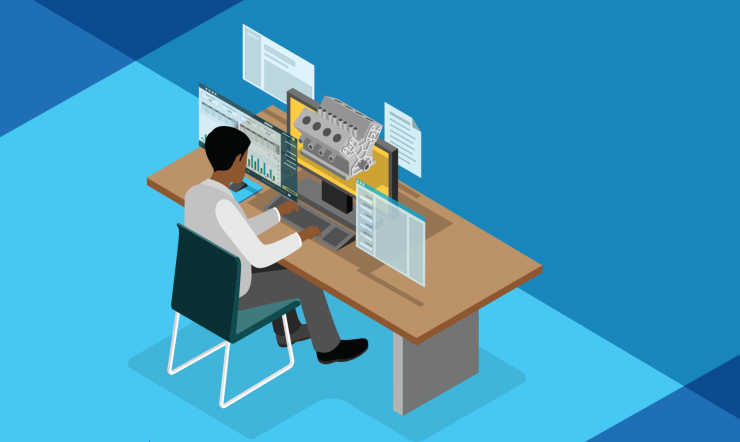Financial services company Belfius will transfer all of its banking services to the cloud over the next seven years. This initiative is an important pillar in the company’s strategy to adapt to the changing needs of its customers – making its processes more cost-effective, safe and sustainable.
This is a pioneering step for Belfius. In the next seven years, all of the bank’s services will operate in the cloud and no longer on its own servers and hardware. Patrick Devis, CIO at Belfius, describes this decision as bold and innovative. “This is unprecedented for a financial institution of our size. Especially since the decision concerns a large part of our services. By following this path of growth, we are working on our core business.”
Belfius has chosen to lay the foundations for its transition to the cloud in collaboration with Microsoft. They made this decision for many reasons, chief amongst them was Microsoft’s vast experience developing cloud technology for the financial sector.
By 2021, Belfius’ personal and business loans service will be operating entirely from Microsoft’s cloud platform, Azure. That will be followed by the gradual deployment of other services.
A secure platform
By switching their underlying IT systems to Azure, Belfius will soon be able to serve its customers even faster and more efficiently. The cloud also guarantees data security and confidentiality. All data in the cloud is de facto encrypted, access control is strictly regulated and the separation of data between companies using cloud services is guaranteed right from the get-go.
“We are adjusting our technology to 21st century standards to support our service offering,” says Bram Somers, Head of IT Strategy, Architecture & Innovation at Belfius. “Customer expectations are significantly different today than they have been in the past. For example, people want to be able to access, control and manage their financial data online via computers and mobile applications anywhere, anytime. In recent years, we have given our customers a banking application that is among the best and most exhaustive on the European market. We are now ready to take the next step.”
Less on-site infrastructure
Switching to Azure also improves the profitability of Belfius’ online processes and operations. Online memory storage and server operations are more cost effective, more flexible and more adaptable when based in the cloud.
“Everyone who needed more capacity and storage had to invest in additional servers and storage solutions, each with their own maintenance costs,” explains Bram Somers. “With cloud technology, most of the hardware is located in data centres run by Microsoft.”
In fact, Microsoft offers this infrastructure via a subscription package – and therefore handles all the necessary expansion and maintenance.
Perfectly prepared for peaks
Scalability is also important. Every day, for example, more than 1.4 million Belfius customers consult their banking transactions via the bank’s app. And they do this mainly at peak times.
“On the morning of the first day of each month, many check their accounts to make sure their wages have been paid,” says Patrick Devis. “At night, it is much quieter of course. In other words, our systems must be able to cope with multiple loads or peaks in a smooth and stable manner. Operationally, these peaks determine the power and IT systems we need.”
So, by moving to Azure, Belfius will no longer need to maintain IT capacity that it uses only for short periods – saving both energy and costs.
An efficiency boost
“Cost is the fourth advantage of cloud technology. The cloud allows a better distribution of servers and hardware. During quieter periods at Belfius, Microsoft shares server capacity with other companies for their online applications. As a consequence, these machines run almost continuously,” explains Bram Somers.
A future-ready platform
In the future, Azure will allow dynamic and flexible implementation of artificial intelligence (AI) and machine learning applications. “Some AI developers hire out their services as part of a software-as-a-service (SAAS) platform or model”, explains Bram Somers. “This means the cloud gives us access to new applications, with which we can set up experiments very easily and quickly, or which we can integrate directly into our processes.”
Plus, AI applications tend to require more complex and specialised computer processors which Belfius will now have access to via Azure. “This is a potentially interesting prospect”, says Patrick Devis.
“We are now firmly grounded in the 21st century and we are strengthening our services by moving entirely to the cloud.”
Bram Somers, Head of IT Strategy, Architecture & Innovation AT Belfius



















